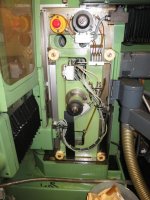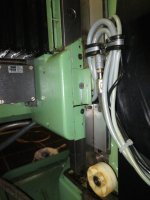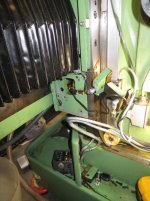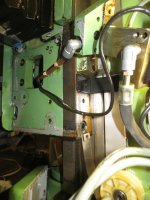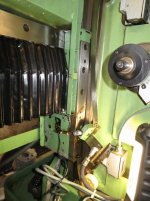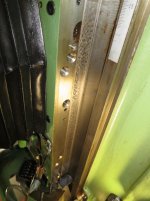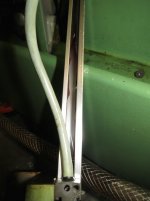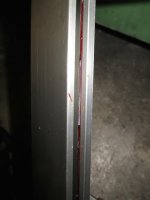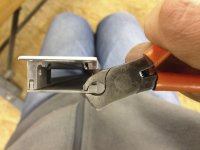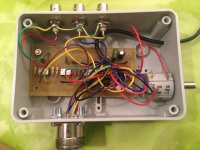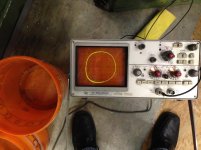rimcanyon
Diamond
- Joined
- Sep 28, 2002
- Location
- Salinas, CA USA
Now that I have machining done for my two main projects, its a good time to address a few problems on the FP2NC. First I would like to remove and inspect the Z-Axis gibs. Objective is to correct the table sag.
Some questions:
I was thinking of using some diagonal blocking to force the saddle up against the column while the gibs are off and while they are being re-fitted.
The enclosure back panels need to be slid out of the way, but I think the rest of the enclosure can remain.
How does the operator's side gib come out? The gib bottom is hidden behind a green cover. I've removed the front screws holding on the cover, but it is still held in place. It looks like the assembly with the Z axis optical scale reader head can be loosened then slid out of the way (after detaching the grey wiring bundles, and probably some additional disassembly, hopefully not involving removing oil lines). If so, then I think the knee should be raised almost to the top, so the reader head assembly can be slid down, but I'm open to suggestions.
When the gibs are refitted, is there any means of adjustment provided, or grind to fit? Is turcite a good option for the gib sliding surface?
-Dave
Some questions:
I was thinking of using some diagonal blocking to force the saddle up against the column while the gibs are off and while they are being re-fitted.
The enclosure back panels need to be slid out of the way, but I think the rest of the enclosure can remain.
How does the operator's side gib come out? The gib bottom is hidden behind a green cover. I've removed the front screws holding on the cover, but it is still held in place. It looks like the assembly with the Z axis optical scale reader head can be loosened then slid out of the way (after detaching the grey wiring bundles, and probably some additional disassembly, hopefully not involving removing oil lines). If so, then I think the knee should be raised almost to the top, so the reader head assembly can be slid down, but I'm open to suggestions.
When the gibs are refitted, is there any means of adjustment provided, or grind to fit? Is turcite a good option for the gib sliding surface?
-Dave


